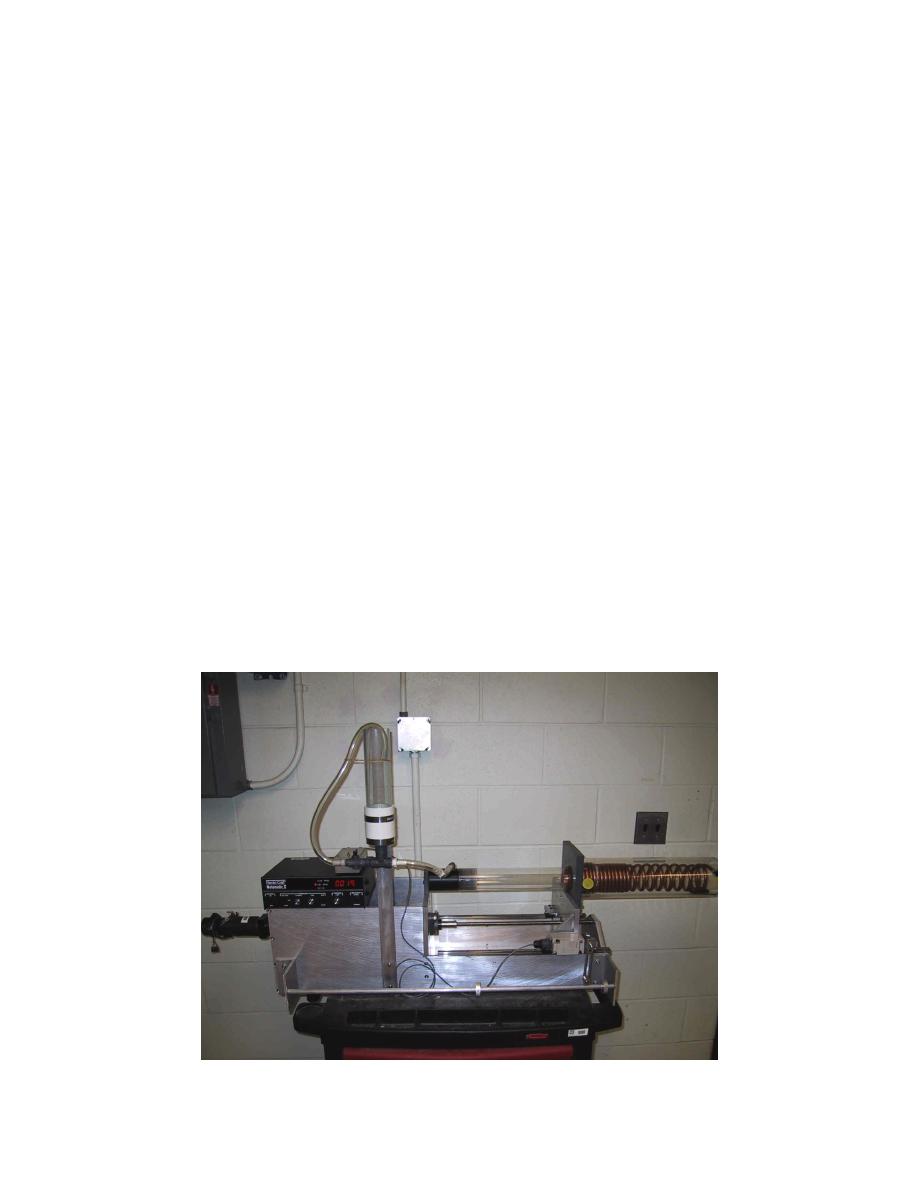
reason, a solution containing a high concentration of
impurities is more difficult to purify than the same so-
lution containing a lower concentration of impurities.
This study examines the effects of freezing rate and
impurity concentration only. Mixing intensity was not
studied because it is an artifact of the mechanical de-
sign and geometry of the freezing device.
To study the effects of freezing rate and impurity
concentration, we built a bench-scale freeze concen-
trator (see Fig. 2). This device can freeze a sample at a
predetermined constant freezing rate. To eliminate the
force of gravity on the migration of particles away from
the freezing front, a 30-cm-long by 5-cm-diameter
Plexiglas tube is made to travel horizontally. A small
reservoir located at the end of the tube is used to col-
lect any excess pinkwater produced by the expansion
of the sample during freezing. The temperature of the
refrigerated collar at the entrance to the freezing cham-
ber is adjusted to obtain different freezing rates.
EXPERIMENTAL METHODS
Pinkwater
The pinkwater was obtained from the equalization
tank at the treatment facility located at McAlester Army
Ammunition Plant (AAP) in McAlester, Oklahoma.
Four 1-L samples were collected in brown glass bottles,
refrigerated, packed in dry ice, and shipped to CRREL.
The contents of these bottles were then mixed to ob-
tain a homogeneous starting solution. We analyzed
3



 Previous Page
Previous Page
